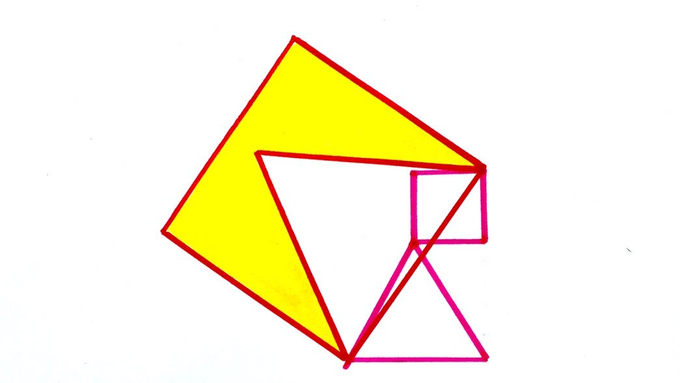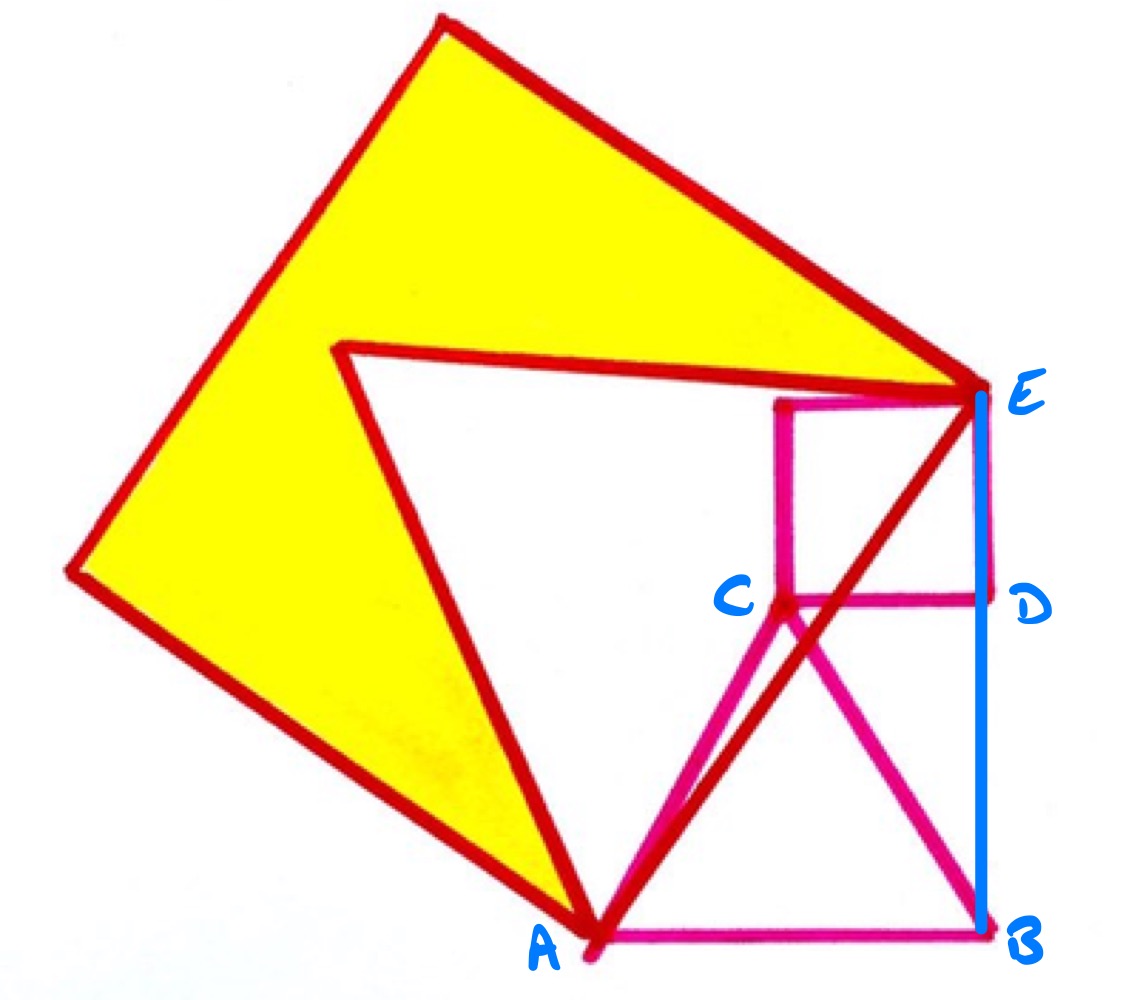Notes
two squares and two equilateral triangles iii solution
Solution to the Two Squares and Two Equilateral Triangles III Puzzle

If the small square has area , what’s the shaded area?
Note that as specified, the problem does not have a unique answer. The diagram implies that the right-hand vertices of the square and triangle are vertically in line and with that assumption then the problem is solvable.
Solution by Properties of Equilateral Triangles and Pythagoras' Theorem

As the small square as area , its side length is . This is half the side length of the equilateral triangle, so its height is . Therefore line segment has length and has length .
Applying Pythagoras' theorem to triangle shows that the length of is given by:
The large square therefore has area . The large equilateral triangle has area times this, so the yellow region has area: